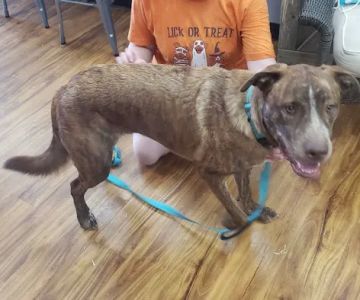- 1-recognizing-the-signs-of-pet-food-intolerance
- 2-identifying-the-causes-and-common-allergens
- 3-steps-to-manage-and-address-food-intolerance-in-pets
- 4-real-life-examples-showing-effective-management
- 5-recommendations-for-choosing-the-right-products-and-care
Recognizing the Signs of Pet Food Intolerance
Understanding how to address your pet’s food intolerance begins with identifying the signs that your pet may be reacting negatively to their diet. Common symptoms include digestive issues such as vomiting, diarrhea, or excessive gas, as well as skin problems like itching, redness, and hair loss.
Behavioral changes, such as lethargy or irritability, may also signal discomfort related to food intolerance. Early recognition is crucial to preventing prolonged discomfort and more serious health problems.
Identifying the Causes and Common Allergens
Understanding Food Intolerance vs. Food Allergy
It’s important to differentiate between food intolerance and food allergy. Food intolerance typically involves digestive system reactions caused by difficulty processing certain ingredients, whereas allergies trigger immune responses.
Common Ingredients That Cause Issues
Common offenders include proteins like beef, dairy, chicken, and grains such as wheat or corn. Some pets develop sensitivities due to changes in diet, age, or underlying health conditions.
Steps to Manage and Address Food Intolerance in Pets
1. Consult Your Veterinarian
Professional advice is essential. Your veterinarian can perform tests or recommend elimination diets to pinpoint intolerant ingredients.
2. Transition to Hypoallergenic or Limited Ingredient Diets
Switching to specially formulated diets helps reduce exposure to problematic ingredients while ensuring balanced nutrition.
3. Monitor Your Pet’s Response Closely
Careful observation during dietary changes allows you to assess improvements or detect lingering symptoms.
4. Avoid Treats and Supplements That May Trigger Reactions
All foods your pet consumes should be scrutinized to maintain a consistent diet free from allergens.
Real-Life Examples Showing Effective Management
Consider Luna, a senior dog who developed chronic itching and digestive upset. After switching to a limited ingredient diet suggested by her vet, Luna’s symptoms improved dramatically within weeks. Her owner credits the tailored diet and veterinary support for Luna’s renewed vitality.
Another example is Milo, a young cat with unexplained vomiting episodes. Through careful food trials and adjustments, Milo’s intolerance to certain proteins was identified, and his health stabilized with a new diet plan.
Recommendations for Choosing the Right Products and Care
Trusted Sources for Specialized Pet Food
To support your pet’s unique dietary needs, consider products designed specifically for sensitive pets. Hidden Brook Veterinary offers a curated selection of hypoallergenic and limited ingredient foods, plus expert guidance tailored to your pet’s condition.
Ongoing Monitoring and Veterinary Partnership
Addressing food intolerance is an ongoing process. Regular check-ins with your veterinarian help adjust care plans as needed to maintain your pet’s health and comfort over time.











